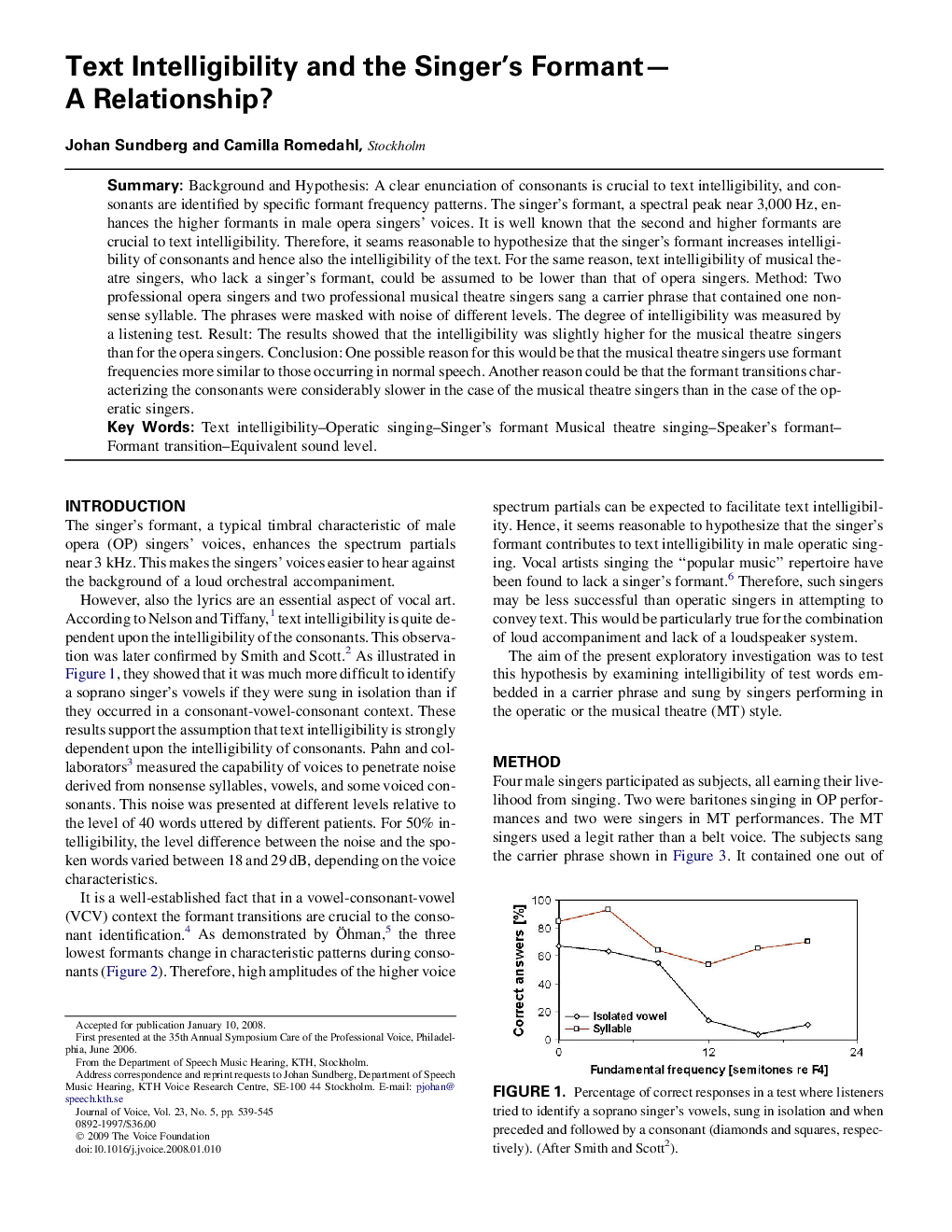| Article ID | Journal | Published Year | Pages | File Type |
|---|---|---|---|---|
| 1102214 | Journal of Voice | 2009 | 7 Pages |
Abstract
Background and Hypothesis: A clear enunciation of consonants is crucial to text intelligibility, and consonants are identified by specific formant frequency patterns. The singer's formant, a spectral peak near 3,000Â Hz, enhances the higher formants in male opera singers' voices. It is well known that the second and higher formants are crucial to text intelligibility. Therefore, it seams reasonable to hypothesize that the singer's formant increases intelligibility of consonants and hence also the intelligibility of the text. For the same reason, text intelligibility of musical theatre singers, who lack a singer's formant, could be assumed to be lower than that of opera singers. Method: Two professional opera singers and two professional musical theatre singers sang a carrier phrase that contained one nonsense syllable. The phrases were masked with noise of different levels. The degree of intelligibility was measured by a listening test. Result: The results showed that the intelligibility was slightly higher for the musical theatre singers than for the opera singers. Conclusion: One possible reason for this would be that the musical theatre singers use formant frequencies more similar to those occurring in normal speech. Another reason could be that the formant transitions characterizing the consonants were considerably slower in the case of the musical theatre singers than in the case of the operatic singers.
Related Topics
Health Sciences
Medicine and Dentistry
Otorhinolaryngology and Facial Plastic Surgery
Authors
Johan Sundberg, Camilla Romedahl,
